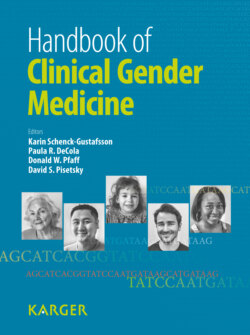Читать книгу Handbook of Clinical Gender Medicine - Группа авторов - Страница 124
Pathogenesis Physiological Dimorphisms
ОглавлениеSexual dimorphisms are found at all levels of the neuroaxis – from differences in intracellular organelles to the size of select brain nuclei to the pattern of synaptic development and pruning. Most of these dimorphisms reflect different levels of exposure to androgens and estrogen, leading to structural and functional differences that either require the continued presence of gonadal steroids (activational effects) or no longer require steroid presence after initial steroid exposure (organizational effects). These sexual dimorphisms may reflect gonadal steroid concentration-dependent effects, that is, the effect would be the same in both sexes if concentrations were similar, or alternatively may reflect sex-dependent differences in the response to gonadal steroids. Not surprisingly, evidence exists for both sources contributing to observed sex differences.
Irrespective of their origin, these dimorphisms exist in neural systems of particular relevance for depression. For instance, gonadal steroids regulate the synthesis, metabolism, and receptor distribution of the neurotransmitters serotonin, GABA, and glutamate, as well as others implicated in affective regulation. Imaging data, which reveal both structural and functional dimorphisms, include different patterns of cortical maturation in adolescence (partially under the control of the androgen receptor) [8] and differences in amygdala projections (women display stronger connections between the amygdala and hypothalamus, cingulate, and subcallosum – all areas involved in mood mediation) [9]. Finally, even the nature of the affective valence of a stimulus to which the medial prefrontal cortex – a major regulator of affect – responds is determined by menstrual cycle-dependent variations in ovarian steroids [10].
